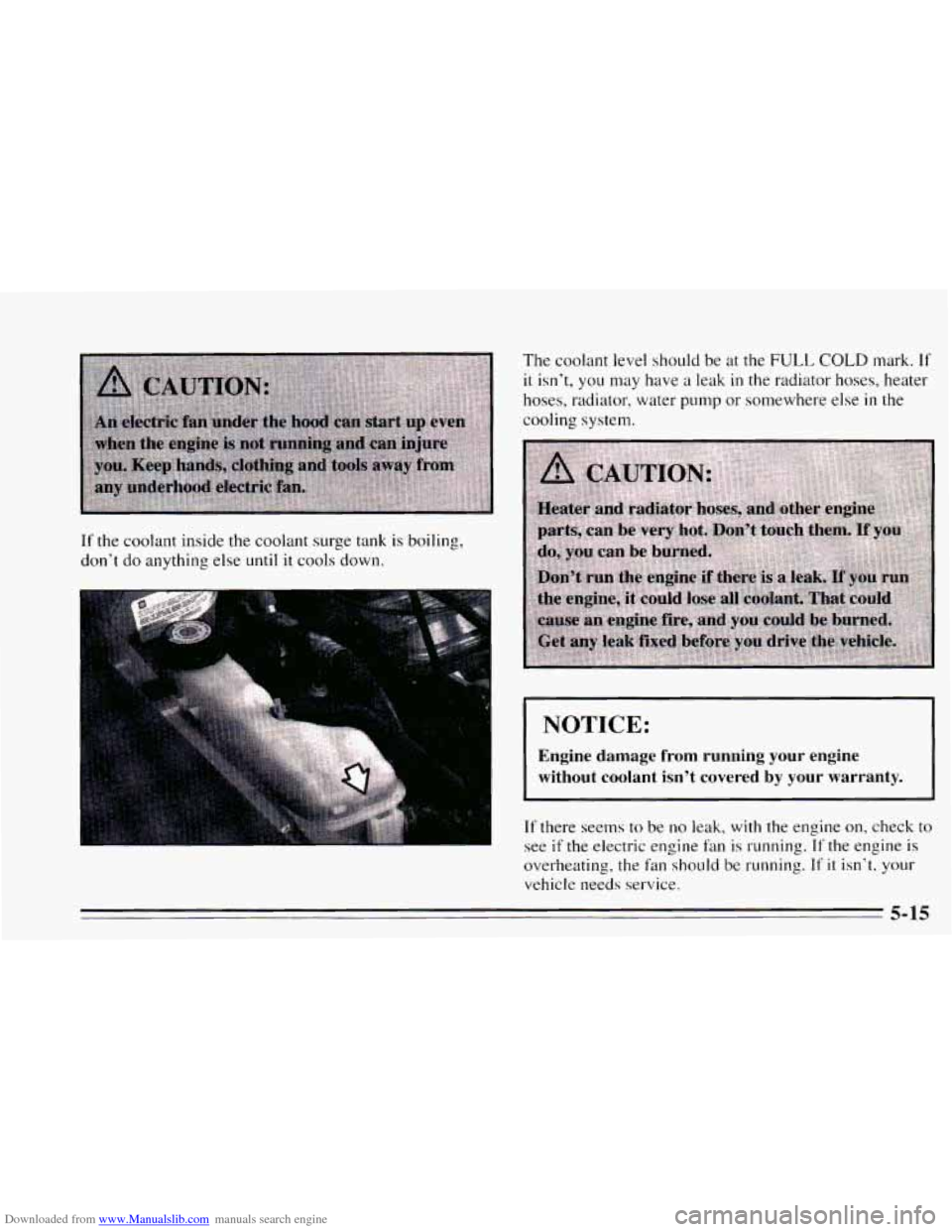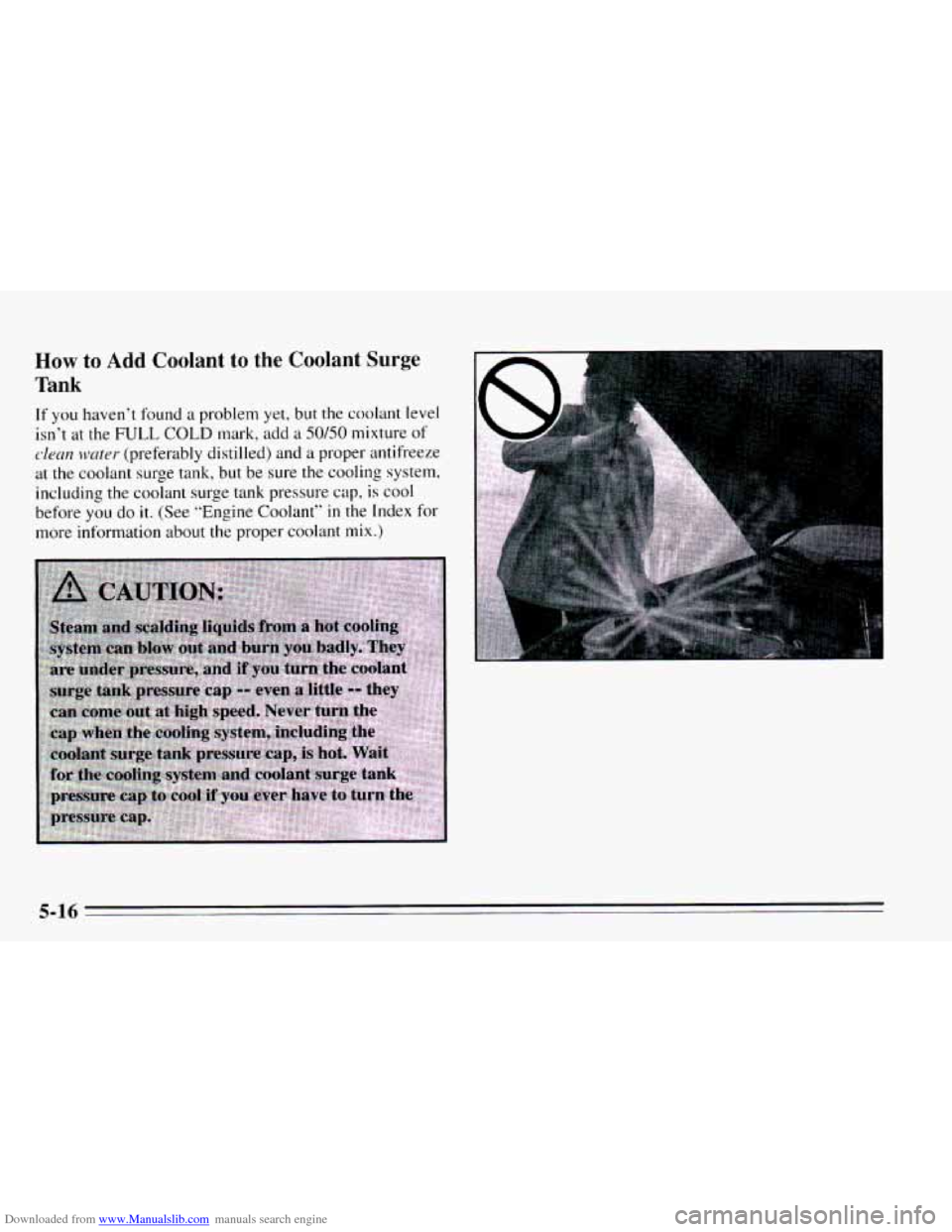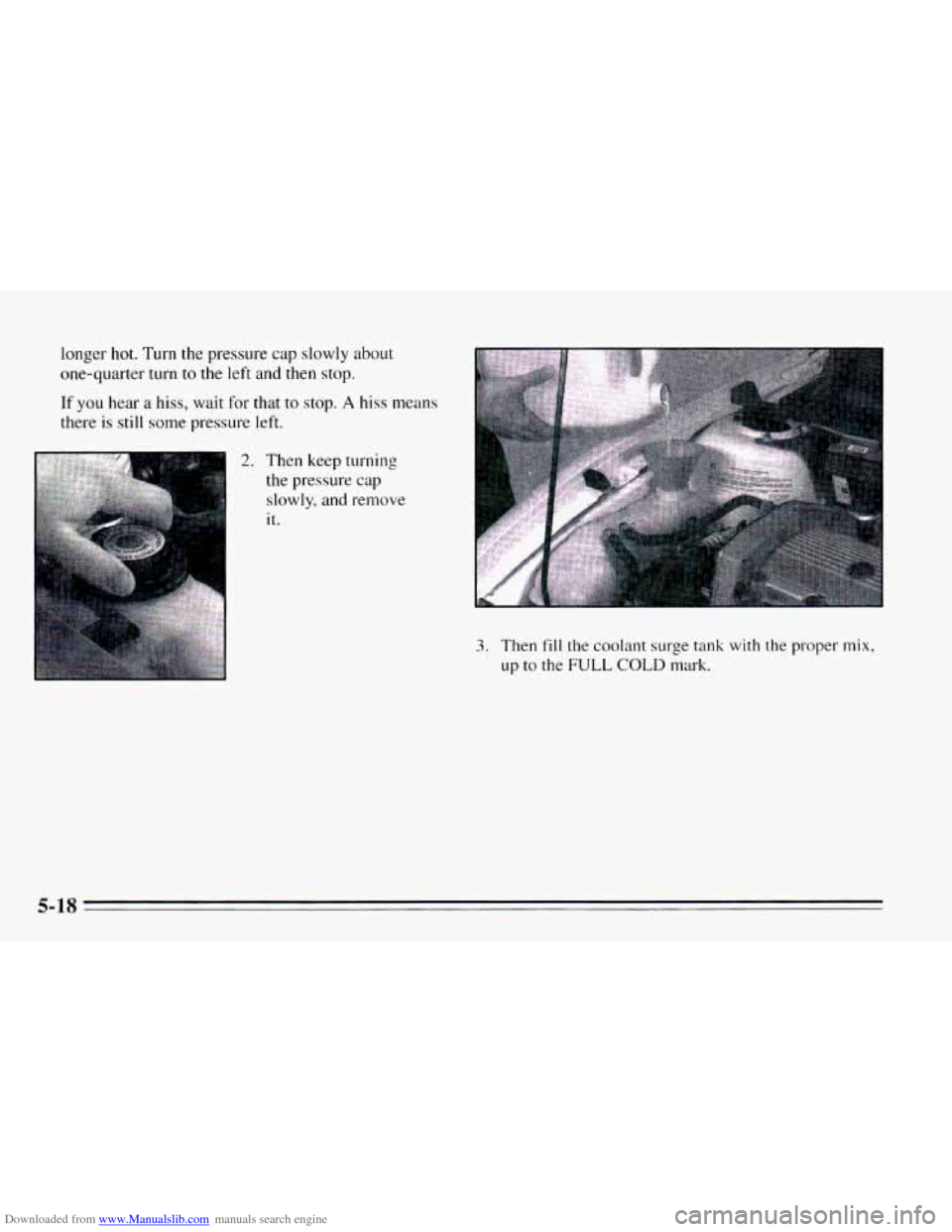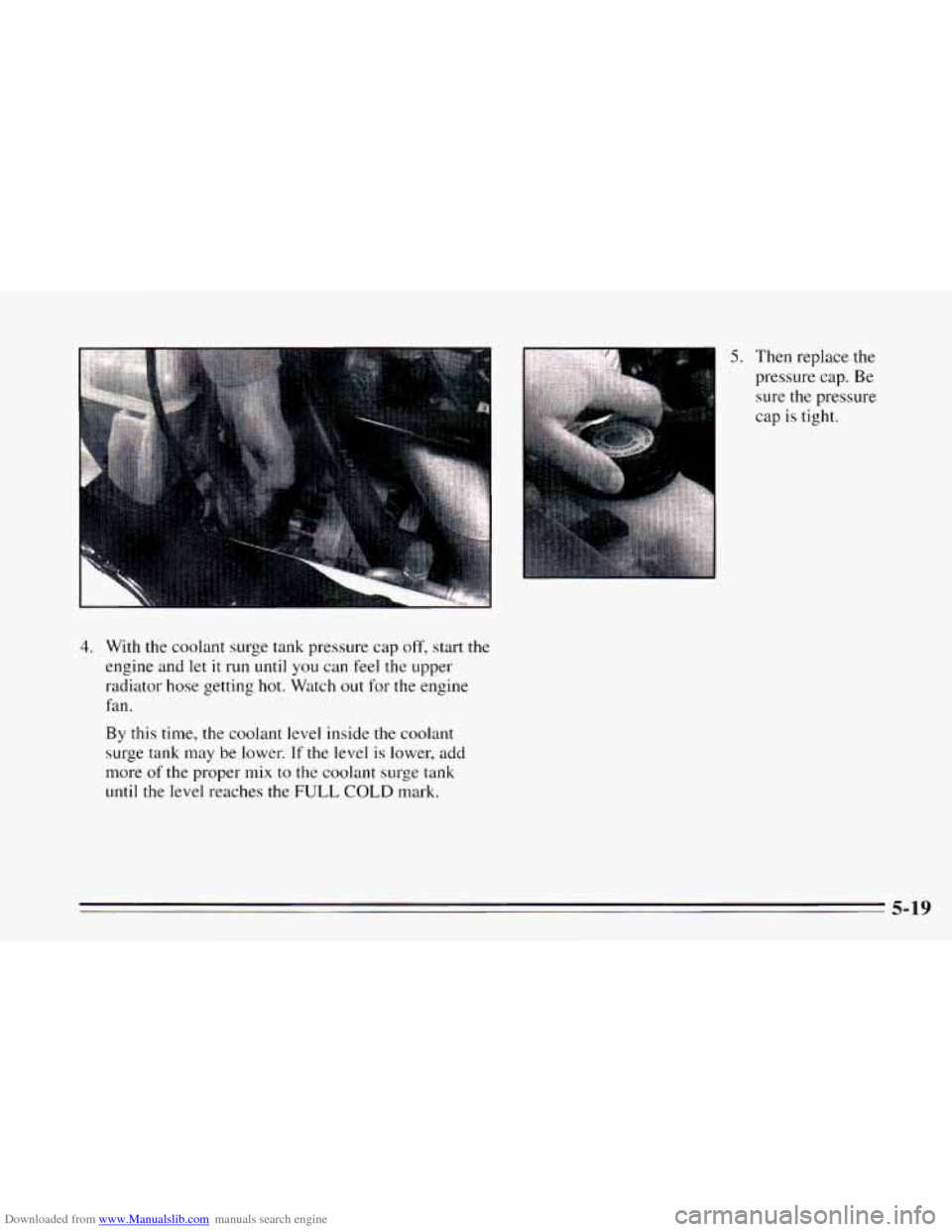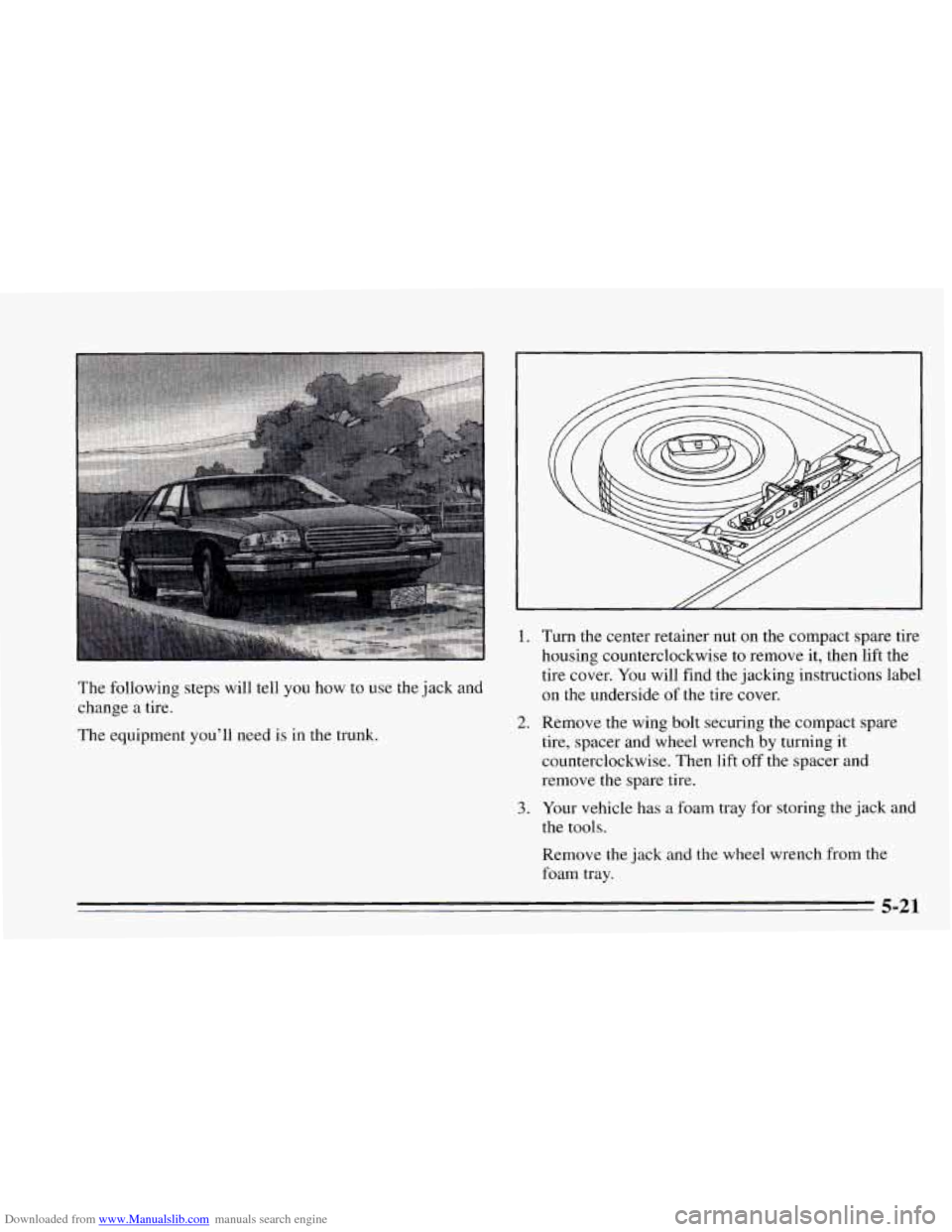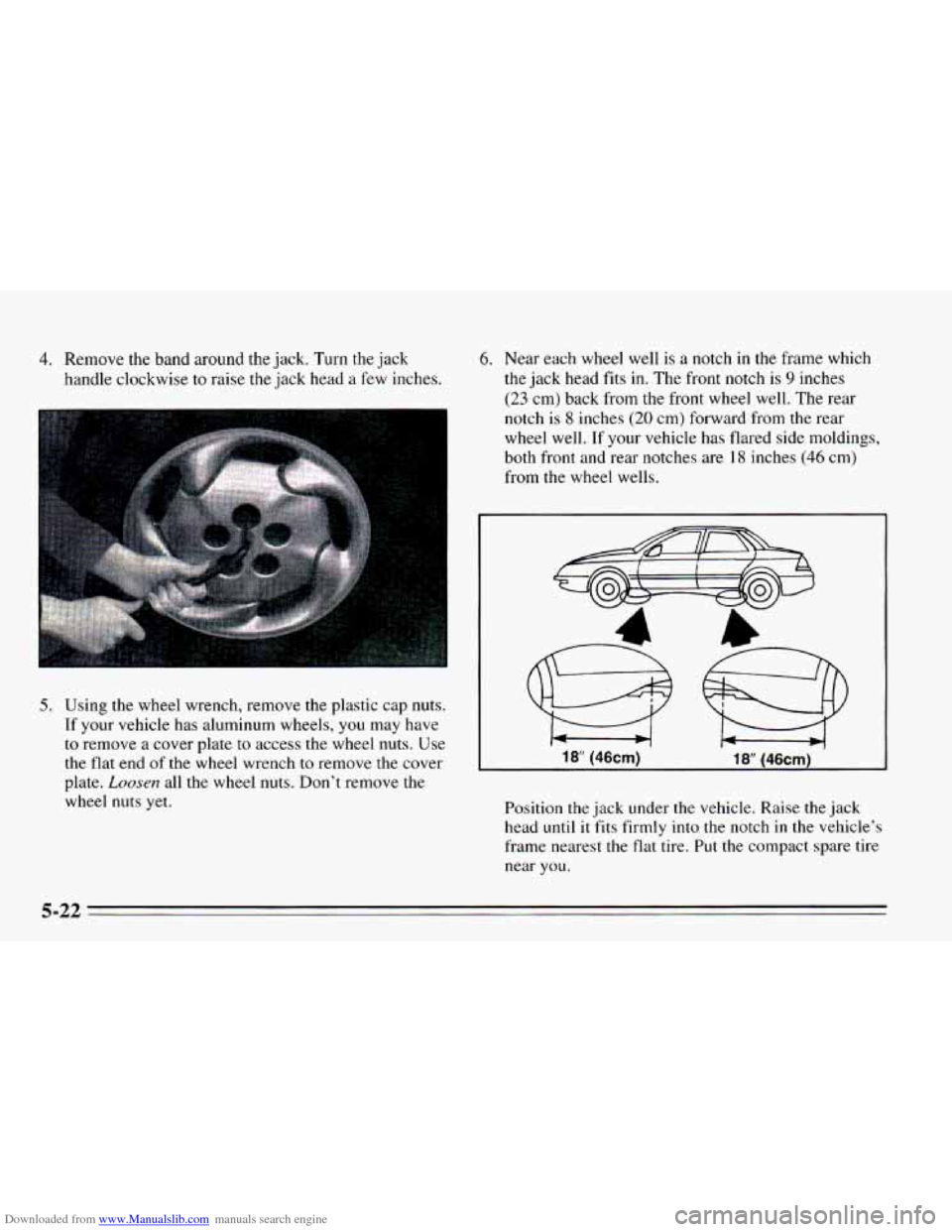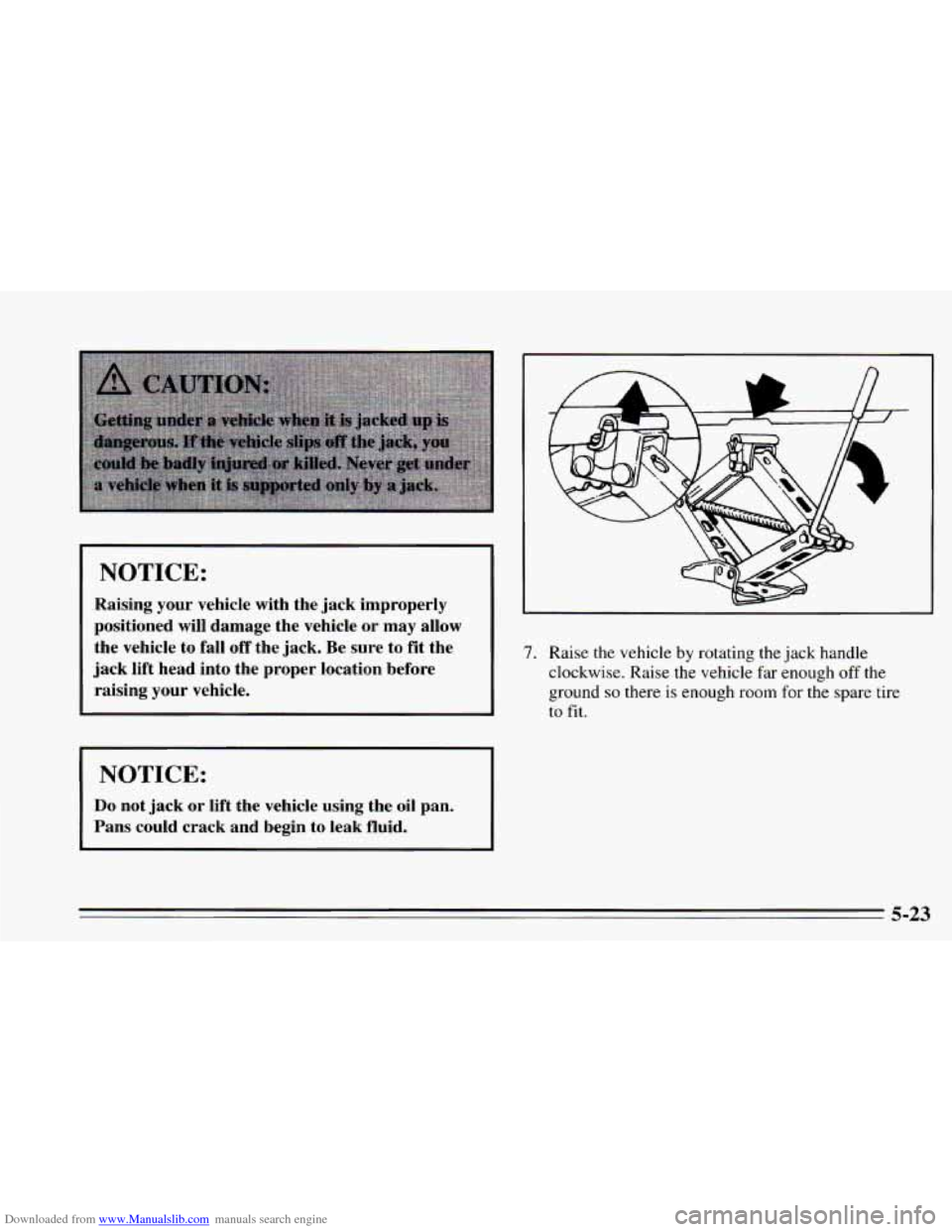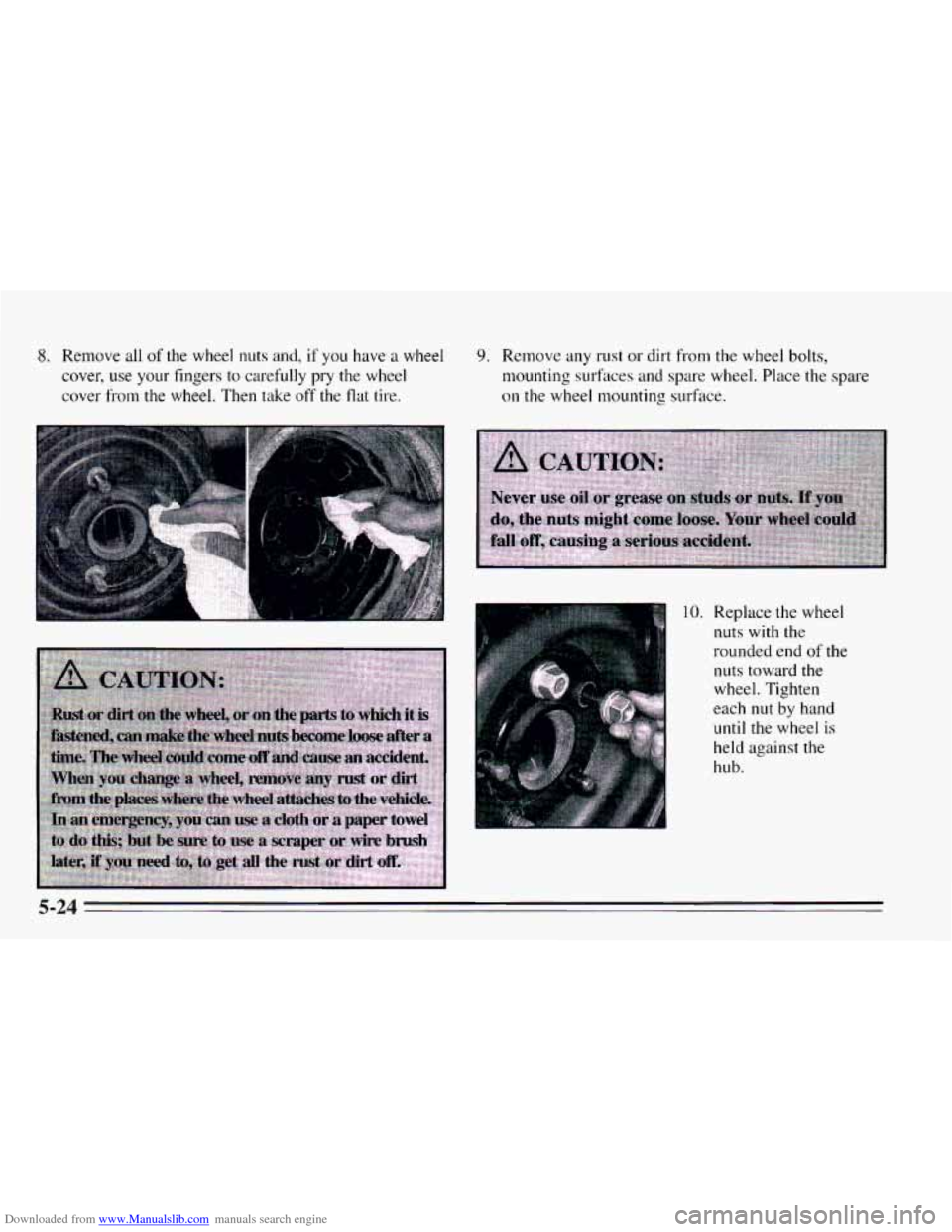CHEVROLET CAVALIER 1995 3.G Owners Manual
CAVALIER 1995 3.G
CHEVROLET
CHEVROLET
https://www.carmanualsonline.info/img/24/8079/w960_8079-0.png
CHEVROLET CAVALIER 1995 3.G Owners Manual
Trending: oil type, load capacity, check engine light, automatic transmission, fuel, power steering, oil dipstick
Page 191 of 340
Downloaded from www.Manualslib.com manuals search engine If the coolant inside the coolant surge tank is boiling,
don't do anything else
until it cools down.
I
The coolant level should be at the FULL COLD mark. If
it isn't, you may have a leak in the radiator hoses, heater
hoses, radiator, water
pump or somewhere else in the
cooling system.
I NOTICE:
I
Engine damage from running your engine
without coolant isn't covered by your warranty.
If there seems to be no leak, with the engine on, check to
see
if the electric engine fm is running. If the engine is
overheating, the
fan should be running. If it isn't, your
vehicle needs service.
5-15
Page 192 of 340
Downloaded from www.Manualslib.com manuals search engine How to Add Coolant to the Coolant Surge
Tank
If you haven’t found a problem yet, but the coolant level
isn’t at the
FULL COLD mark, add a 50/50 mixture of
c-lean water (preferably distilled) and a proper antifreeze
at the coolant surge tank, but be sure the cooling system,
including the coolant surge tank pressure cap,
is cool
before you do it. (See “Engine Coolant” in the Index for
more information about
the proper coolant mix.)
5-16
Page 193 of 340
Downloaded from www.Manualslib.com manuals search engine NOTICE:
In cold weather, water can freeze and crack the
engine, radiator, heater core and other parts.
So
use the recommended coolant.
I. You can remove the coolant surge tank pressure cap
when the cooling system, including
the coolant surge
tank pressure cap and upper radiator hose,
is no
5-17
Page 194 of 340
Downloaded from www.Manualslib.com manuals search engine longer hot. Turn the pressure cap slowly about
one-quarter turn
to the left and then stop.
If you hear a hiss, wait for that to stop. A hiss means
there is still some pressure left.
2. Then keep turning
the pressure cap
slowly, and remove
it.
3. Then fill the coolant surge tank with the proper mix,
up to the FULL COLD mark.
5-18
Page 195 of 340
Downloaded from www.Manualslib.com manuals search engine 4. With the coolant surge tank pressure cap off, start the
engine and let
it run until you can feel the upper
radiator hose getting hot. W'ltch
out for the engine
fan.
By this time, the coolant level inside the coolant
surge tank
may be lower. If the level is lower, add
more
of the proper mix to the coolant surge tank
until the level reaches the FULL COLD mark.
5. Then replace the
pressure cap.
Be
sure the pressure
cap is tight.
5-19
Page 196 of 340
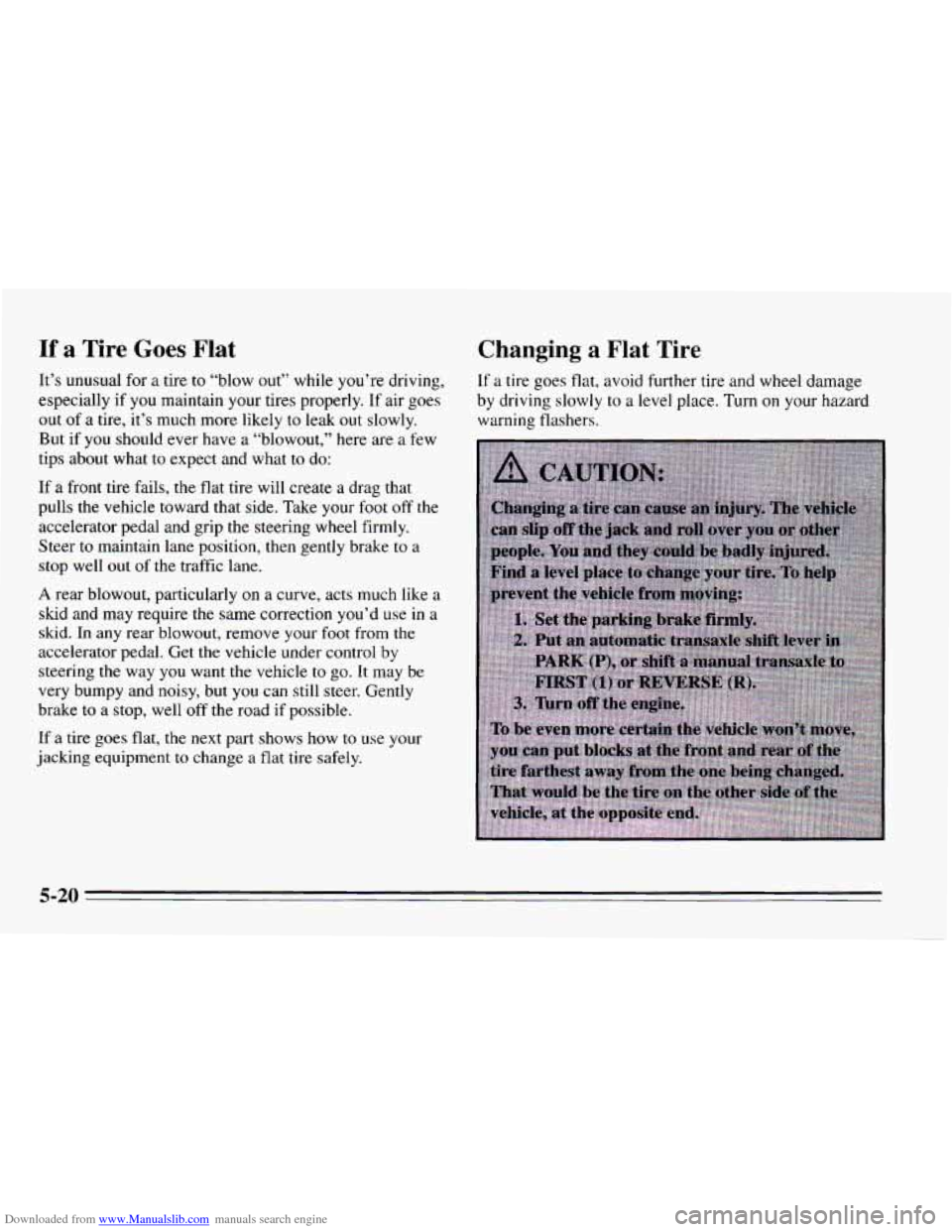
Downloaded from www.Manualslib.com manuals search engine If a Tire Goes Flat
It’s unusual for a tire to “blow out” while you’re driving,
especially if
you maintain your tires properly. If air goes
out of a tire, it’s much more likely
to leak out slowly.
But if you should ever have a “blowout,” here are a few
tips about what to expect and what to do:
If a front tire fails, the flat tire will create a drag that
pulls the vehicle toward that side. Take your foot off the
accelerator pedal and grip the steering wheel firmly.
Steer to maintain lane position, then gently brake to a
stop well out
of the traffic lane.
A rear blowout, particularly on a curve, acts much like a
skid and
may require the same correction you’d use in a
skid. In any rear blowout, remove your foot from the
accelerator pedal. Get the vehicle under control by
steering the way you want the vehicle to
go. It may be
very bumpy and noisy, but you can still steer. Gently
brake to
a stop, well off the road if possible.
If a tire goes flat, the next part shows how to use your
jacking equipment
to change a flat tire safely.
Changing a Flat Tire
If a tire goes flat, avoid further tire and wheel damage
by driving slowly
to a level place. Turn on your hazard
warning flashers.
5-20
Page 197 of 340
Downloaded from www.Manualslib.com manuals search engine The following steps will tell you how to use the jack and
change a tire.
The equipment you'll need is in the trunk.
1.
2.
3.
Turn the center retainer nut on the compact spare tire
housing counterclockwise to remove it, then lift the
tire cover. You will find the jacking instructions label
on the underside of the tire cover.
Remove the wing bolt securing the compact spare
tire, spacer and wheel wrench by turning it
counterclockwise. Then lift
off the spacer and
remove the spare tire.
Your vehicle has a foam tray for storing the jack and
the tools.
Remove the jack and the wheel wrench from the
foam tray.
5-21
Page 198 of 340
Downloaded from www.Manualslib.com manuals search engine 4. Remove the band around the jack. Turn the jack
handle clockwise
to raise the jack head a few inches.
5. Using the wheel wrench, remove the plastic cap nuts.
If your vehicle has aluminum wheels,
you may have
to remove a cover plate to access the wheel nuts. Use
the flat end
of the wheel wrench to remove the cover
plate.
Loosen all the wheel nuts. Don’t remove the
wheel nuts yet.
6. Near each wheel well is a notch in the frame which
the jack head fits in. The front notch
is 9 inches
(23 cm) back from the front wheel well. The rear
notch
is 8 inches (20 cm) forward from the rear
wheel well. If your vehicle has flared side moldings,
both front and rear notches are 18 inches
(46 cm)
from the wheel wells.
Position the jack under the vehicle. Raise the jack
head
until it fits firmly into the notch in the vehicle’s
frame nearest the flat tire. Put the compact spare tire
near
you.
5-22
Page 199 of 340
Downloaded from www.Manualslib.com manuals search engine NOTICE:
Raising your vehicle with the jack improperly
positioned will damage the vehicle or may allow
the vehicle
to fall off the jack. Be sure to fit the
jack lift head into the proper location before
raising your vehicle.
I
NOTICE:
Do not jack or lift the vehicle using the oil pan.
Pans could crack and begin to leak fluid.
7. Raise the vehicle by rotating the jack handle
clockwise. Raise the vehicle
far enough off the
ground
so there is enough room for the spare tire
to fit.
5-23
Page 200 of 340
Downloaded from www.Manualslib.com manuals search engine 8. Remove all of the wheel nuts and, if you have a wheel
cover, use your fingers to carefully pry the wheel
cover from
the wheel. Then take off the flat tire.
9. Remove any rust or dirt from the wheel bolts,
mounting surfaces and spare wheel. Place the spare
on the wheel mounting surface.
10. Replace the wheel
nuts with the
rounded end
of the
nuts toward the wheel. Tighten
each
nut by hand
until the wheel is
held against the
hub.
5-24
Trending: height, fuel filter, automatic transmission, spare wheel, airbag, fold seats, washer fluid
